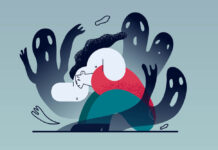An article published in Pediatrics is the first to examine the relationship between physical activity and depression in middle childhood (years 6 to 10) longitudinally. The authors used data from a large community sample based in Norway to understand the bidirectional influence between moderate-to-vigorous physical activity (MVPA) and symptoms of depression.
“MVPA predicted reduced numbers of MDD symptoms from age 6 to 8 and from age 8 to 10. Moreover, depression did not predict later MVPA, and no effects of sedentary activity on depression, or vice versa, were detected.”
 The effects of exercise on depression in adulthood have been found to be both positive and underestimated. Additionally, as the authors of this article point out, physical activity has been found to reduce depression symptoms, as well as the likelihood of developing Major Depressive Disorder (MDD) in adolescence and adulthood. Given the harmful effects antidepressants can have in children and teens as well as their lack of efficacy, the field calls for innovative efforts to target this issue.
The effects of exercise on depression in adulthood have been found to be both positive and underestimated. Additionally, as the authors of this article point out, physical activity has been found to reduce depression symptoms, as well as the likelihood of developing Major Depressive Disorder (MDD) in adolescence and adulthood. Given the harmful effects antidepressants can have in children and teens as well as their lack of efficacy, the field calls for innovative efforts to target this issue.
For this study, the authors sought to identify the effects of physical activity on depression symptoms in childhood, as well as the impact of these symptoms on active or sedentary behaviors. Utilizing data from a large cohort study based out of community health settings, the authors identified 799 children for the study, using 6, 8, and 10 years of age as collection time points. Researchers measured the children’s physical activity (via an accelerometer) and their BMI, as well as symptoms of MDD as reported by the child or the parent.
The authors found that MDD in their sample decreased from ages 6 to 8, whereas physical activity did not change in these years. MDD then increased between the ages of 8 to 10, and physical activity was found to have decreased between these ages. Sedentary activity was found to increase between 6 to 8 and then increase further during the next time points. The authors write, “The symptoms of MDD were negatively correlated with MVPA at ages 8 and 10, but were unrelated to sedentary activity.” Also, higher levels of physical activity between 6 to 8 predicted fewer symptoms years later.
“Although the effect was small, our results indicate that increasing MVPA in children at the population level may prevent depression, at least at subclinical levels.”
The study supports prior findings in adult and adolescent studies, regarding the relationship between physical activity and depression. The authors posit various explanations for this effect in childhood, including the distracting element of physical activity, the self-esteem and self-efficacy building that can occur through sports, social integration and peer acceptance, as well as the physiological effects of exercise on neurotransmitters.
****
Zahl, T., Steinsbekk, S., & Wichstrøm, L. (2017). Physical Activity, Sedentary Behavior, and Symptoms of Major Depression in Middle Childhood. Pediatrics, e20161711. (Abstract)















My psychiatrist tried to convince me to stop exercising, that’s when I realized he really was insane. I’m so glad the psychiatric profession is finally starting to be taught some common sense, although how sad they’ve been lacking in common sense for so long.
Report comment
How do 6-10 year old children get diagnosed with Major Depressive Disorder?
What is going wrong in our society that these young children are floored by such crippling symptoms that they get diagnosed?
Does the diagnosis of MDD ever go away? Or are they stuck with it “for life?”
I know the point of this article was to emphasize the exercise – but I keep thinking about those children.
Report comment
What has happened is that the drug companies and psychiatry in general, thanks to psychiatrists like dear Joseph Beiderman, were able to pathologize many aspects of normal childhood and growing up so that they could be turned into diagnoses. And then we know the next step; they get drugged to the gills, which is quite profitable for both the drug companies and the psychiatrists who call themselves “child psychiatrists”.
There is no doubt that children find themselves under more stress and anxiety now than my generation did as children, but rather than work with kids to understand where the problems are stemming from many people, both parents and teachers, find it much more convenient to drug them to the gills so that they don’t have to put up with aggravating behavior. Also, the expectations that parents and society in general have for kids these days are unreasonable and basically unachievable. School is boring, which causes problems for kids that have lots of energy or curiosity. This leads to their getting drugged for having ADHD, one of the biggest hoaxes perpetrated in all of time. What it boils down to is that kids can no longer be kids anymore, and if they try to be anyway they will end up being drugged to the gills.
Report comment
In other news, plants grow taller when they get more sunlight
Report comment
“Physical Activity Predicts Fewer Symptoms of Depression in Children”
A loving, caring, validating and stimulating home environment would not only predict the same, but prevent feelings of sadness, loneliness and being unwanted in the first place
Report comment
In the US physical activity by children in schools is risky it could be labelled “hyper activity” and lead to a childhood on drugs.
The children are a captive population in the public schools of the country, and the diagnosing being done by public school personnel – most importantly by teachers – is the name of the game.
One of the biggest risks in sending your children to public school and preschool is that the personnel of theses schools – teachers (especially), principles, school nurses, school psychiatrists/councilors, etc. – may decide that your child has a “mental disorder” (ADD, ADHD, depression, etc.). Their natural conclusion is likely to be that he/she needs to be drugged. There are many who are not above demanding that you comply with this, resorting to threats and even to removing the child from the home when “necessary”.
We live in a time when more children are drugged than ever before. The pharmaceutical companies like nothing better than to sell more pills and to invent new “illnesses”. They are happy if they can deceive you (through schools and doctors) to drug your child because they gain a lifelong “customer”.
Report comment